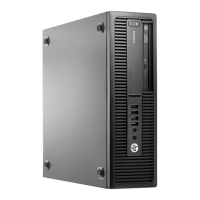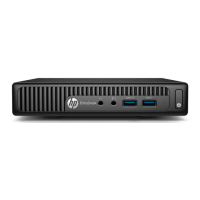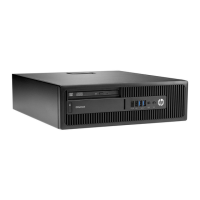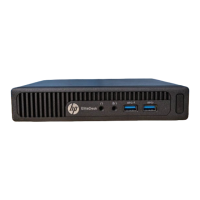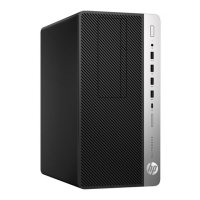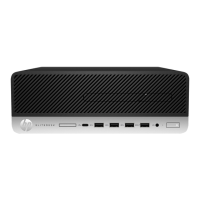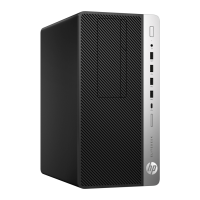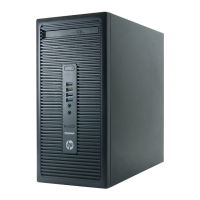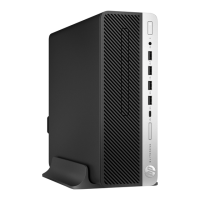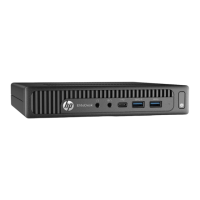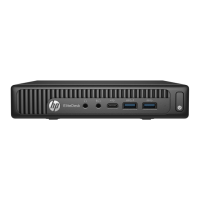Fan sink
CAUTION: The bond between the fan sink and the processor may be very tight.
If the computer will power on, before removing the fan sink, turn on the computer until it warms the fan sink.
Warming the heat sink lessens the bond between the fan sink and the processor, thereby making separating
them easier.
Make sure not to pull the processor out of the socket when you lift the fan sink, especially if you cannot warm
the fan sink prior to removal. Inadvertently removing the processor can damage the pins.
The fan sink is secured atop the processor with four captive Torx screws. The fan sink does not include a fan.
1. Prepare the computer for disassembly (Preparation for disassembly on page 19).
2. Remove the access panel (Access panel on page 20).
3. Rotate the drive cage to its upright position.
4. Rotate the small bae into the upright position (Small bae on page 47).
5. Remove the fan bae (Fan bae on page 48).
6. Disconnect the fan cable from the system board connector labeled CPUFAN (1), and then loosen the four
captive screws (2) that secure the fan sink to the system board tray.
CAUTION: Fan sink retaining screws should be removed in diagonally opposite pairs (as in an X) to even
the downward forces on the processor. This is especially important as the pins on the socket are very
fragile and any damage to them may require replacing the system board.
7. Lift the fan sink from atop the processor (3) and set it on its side to keep from contaminating the work
area with thermal grease.
When reinstalling the fan sink, make sure that its bottom has been cleaned with an alcohol wipe and fresh
thermal grease has been applied to the top of the processor.
Fan sink 55
